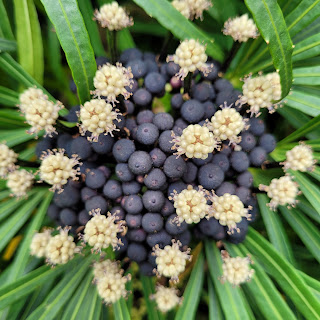Birds of Punggol WaterWay Park
Written by: Aarushi (2B), Sanvi (2B), Brandon (3D), Randall (4C)
Did you know that the Punggol WaterWay is Singapore’s longest man-made waterway? It both serves to increase park and water frontage for the housing estates and provide a green respite for residents. The Punggol waterway is a joint project between National Parks Board (NParks) and the Housing Development Board (HDB).The Punggol WaterWay is located in Punggol, near Sam Kee LRT station. This is a favorite spot for fitness enthusiasts to get a morning jog or cycle along the pavements. This park is also full of lush greenery and features a mesmerising waterfront. This makes it a place for Instagrammers, nature enthusiasts, cyclists and joggers to enjoy and relax. In addition, the waterway has floating hexagons, with wetland plants grown on them, which act as artificial wetland for several different species of insects, fish, reptiles and birds.
Photo credit: National Parks Board (NParks)
Regular exercise is a part of a healthy lifestyle. So head down to this park to exercise and spend some quality time with nature. Parks such as this are some of the best locations to get a break from our daily stressful and hectic lives. As part of our school’s Physical Education (PE) curriculum, we have an annual event 'Jogathon' which is a 2.4 kilometre jog around the Punggol WaterWay Park. Check out the video below for our 2019 Jogathon.
THE BIRDS
Birds are warm-blooded animals that have evolved from a group of archosaurs known as the theropods. Birds are found on every continent in the world, including Antarctica.
There are various birds found at the Punggol Waterway Park. A few examples are listed below:
Javan Myna/Mynah (Acridotheres javanicus)
Photo credit: NParks
This bird has been in Singapore since 1925 due to the ornamental bird trade. The Javan Myna originated from Java, Indonesia. It is almost completely black and has two distinctive white patches on the underside of the wings which can be seen when it is flying. It is known to forage for food at hawker centres and rubbish dumps. This highly adaptable bird has managed to outcompete our native birds such as the common mynah (Acridotheres tristis) and the black-naped oriole (Oriolus chinensis).
*Reference from the internet: https://lkcnhm.nus.edu.sg/dna/organisms/details/470
Blue-throated bee-eater (Merops viridis)
Photo credit: Sangmen Wong
The blue-throated bee-eater can be found from South China to Singapore. It has a bluish-green body with dark chestnut crown and mantle, black eyestripe and bluish tail and throat. This bird can be commonly spotted around Punggol End near the Sook Ching massacre site and the Outward Bound Singapore (OBS) Reception Centre. It is known to hunt for insects in mid-air, such as dragonflies, bees and flies, and the occasional fish and lizard.
Fun Fact: Did you know that the Blue-throated bee-eater can be found on Singapore's $100 "Bird Series" notes?
Eastern Barn Owl (Tyto javanica)
Photo credit: Ellyn Tan
The eastern barn owl is a nocturnal and uncommon resident of Singapore. It is found on every continent except for Antarctica. It hunts for rodents, bats and small birds by using its excellent sense of hearing in the dark, and eats up to twenty-three percent of their body weight. The eastern barn owl uses its flight feathers to silence its movements to prevent detection.
Objects such as bones, teeth, beaks, feathers and fur are indigestible and are always regurgitated out as a pellet. Owl pellets is one way to identify that there is an owl roosting nearby. Like most birds, barn owls form a monogamous relationship and mate for life. Due to urbanisation, many have died as a result of smashing into windows, eating rodents containing rat poison, being fried by live wires and getting tangled in improperly disposed fishing lines.
Objects such as bones, teeth, beaks, feathers and fur are indigestible and are always regurgitated out as a pellet. Owl pellets is one way to identify that there is an owl roosting nearby. Like most birds, barn owls form a monogamous relationship and mate for life. Due to urbanisation, many have died as a result of smashing into windows, eating rodents containing rat poison, being fried by live wires and getting tangled in improperly disposed fishing lines.
Owl pellets found littered over the parade square on a daily basis is evidence of an owl roosting in Greendale Secondary School.
References
Owl pellets: https://en.m.wikipedia.org/wiki/Pellet_(ornithology)
Long-tailed Shrike (Lanius schach)

Photo credit: Norhafiani Abdul Majid
Photo credit: Norhafiani Abdul Majid
This song bird may look very adorable but did you know that 'lanius' means 'the butcher' in Latin? Without sharp claws like the birds of prey do, this little fluff ball impales its prey onto objects such as plant spikes or barb wires instead. These insect and small mammal kebabs can be eaten right away or stored for later. Such kebabs are used by the males to attract mates as well.
CONCLUSION:
Punggol Waterway Park is home to many more birds and different types of animals. The park is a great place for one to de-stress, connect with nature and to admire the scenery. It is also great for wildlife photographers as they can take many pictures of the wildlife here. Do spend time with your family in this park to have a wonderful experience!

Comments
Post a Comment